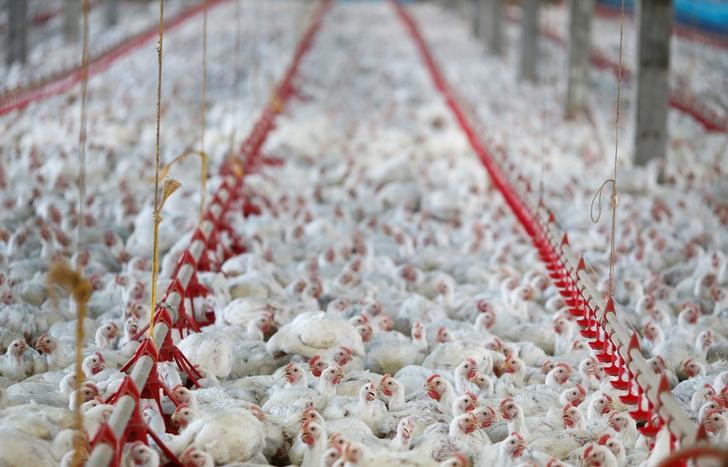By Tom Polansek
CHICAGO (Reuters) – The U.S. is detecting fewer cases of avian flu in wild birds that transmit the virus to poultry flocks, the agriculture department said, a potentially positive development for farmers and consumers after a two-year outbreak.
A top official warned that risks remain high, though, and urged farmers to maintain stringent safety and cleaning protocols to protect flocks. Record infections on poultry farms drove egg and turkey prices to all-time highs in 2022, raising costs for inflation-hit shoppers.
“We certainly don’t want producers to drop their guard. But the viral load in the environment is less,” Rosemary Sifford, chief veterinary officer for the U.S. Department of Agriculture, said in an interview.
Wild birds can carry the disease, known as bird flu, when migrating without showing signs of illness. Poultry can become infected through contaminated feces or direct contact.
The U.S. has reported about 2,600 cases in wild birds in 2023, compared to nearly 6,000 cases in 2022, according to a USDA database.
Experts said wild birds may have built immunity to the disease, which has also spread in Europe. However, new chicks hatched in summer nesting grounds are also part of migrations and could pose a threat.
“Young chicks are likely carrying the virus,” Sifford said. “They would not yet have had the virus move through them and carry any immunity.”
Since 2022, about 76.9 million U.S. chickens, turkeys and other birds have been wiped out by the disease, including more than 13 million in the last month, according to the USDA.
Cases in commercial poultry flocks have climbed since October, though infections in 2023 are down from 2022. Officials believe the decline correlates with the reduction in cases in wild birds, Sifford said.
“We’re finding less positive cases, so we believe that correlates to a lower prevalence across the population,” she said. “It’s a positive development as long as we don’t become complacent.”
Read the full article here



